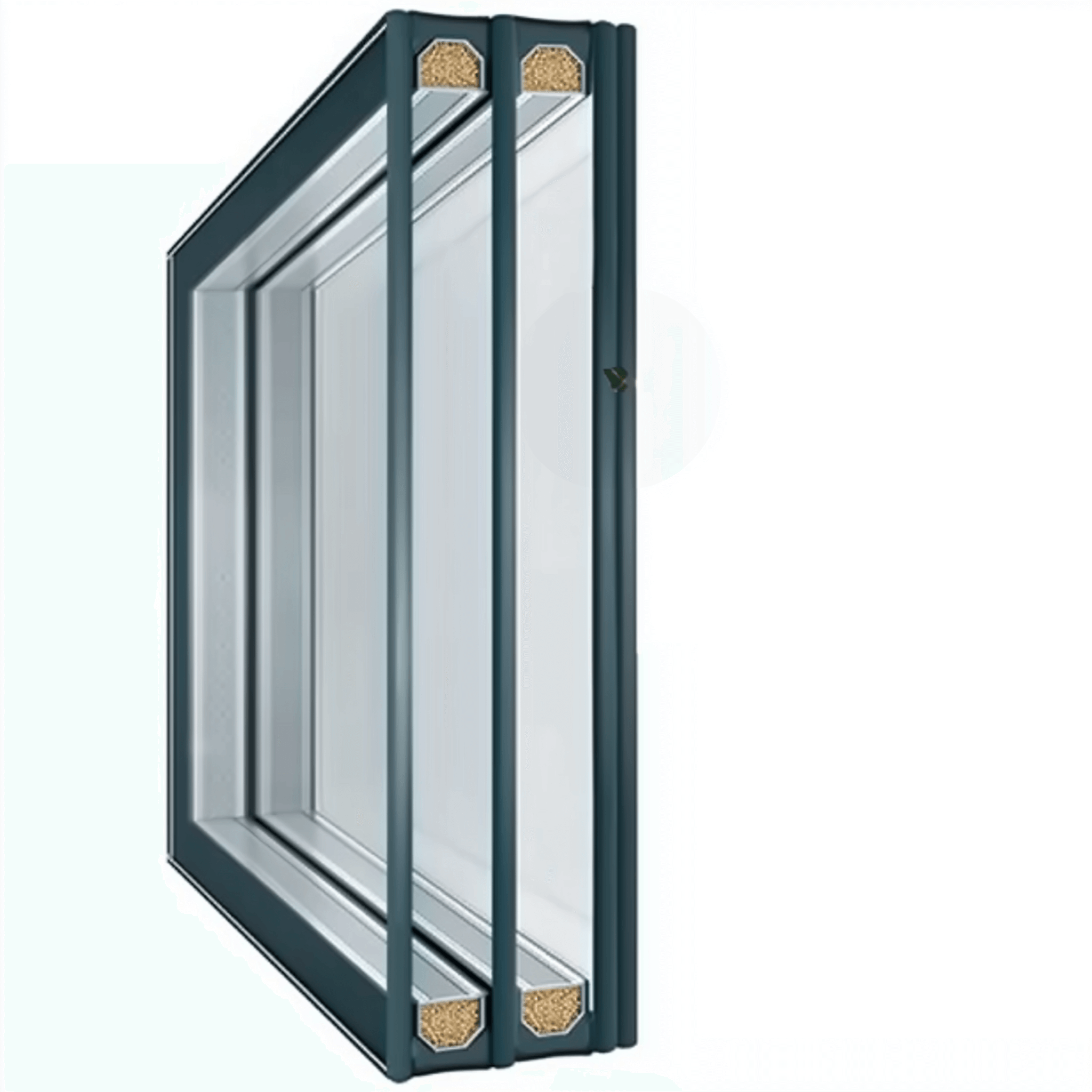Mosquito nets and their types
· María Fernández · Safety and Security · 19 min read
Mosquito nets in Spain are not a luxury, but a necessity. The mild climate creates ideal conditions for insects for most of the year. Mosquitoes, flies, wasps, and moths swarm into homes at the first opportunity. Chemical repellents, fumigators, and coils work, but they come with ongoing costs, odor, and are harmful to health. A mosquito net is a one-time investment of €25-€200 per window, which solves the problem for 5-10 years without side effects.
Why Mosquito Nets Are Needed in Spain
Mosquito Protection
Mosquitoes in Spain are active from April to October in the central regions and year-round in the south and along the coast.
Mosquitoes are especially numerous:
- Near rice fields (Valencia, Ebro Delta)
- Near bodies of water, rivers, and swamps
- In irrigated areas (huertas)
- After rains in hot weather
Mosquito Types:
- Culex pipiens (common mosquito) — bites in the evening and at night, squeaking
- Aedes albopictus (tiger mosquito) — bites during the day, silent, more aggressive, originates from Asia
- Anopheles (malaria mosquito) — rare, only in some swampy areas
Danger of Bites:
- Itching, scratching, infection of wounds (especially in children)
- Allergic reactions (in 10-15% of people)
- Rarely — transmitted diseases (dengue, West Nile, Zika — isolated cases in (Spain)
- Sleep disturbance is the main problem.
Without a mosquito net, you have to choose between stuffy, closed windows or mosquitoes all night. With a net, you get fresh air and a restful sleep.
Protection from other insects
Flies carry bacteria from the street and garbage. They land on food and dishes. They are especially active in the summer, in rural areas, and near livestock farms.
Wasps and bees fly into the house, attracted by sweets, fruits, and drinks. The bites are painful and can cause anaphylactic shock for allergy sufferers.
Moths and moths are attracted to light. They hit chandeliers, fall into food, and frighten children. Some species leave irritating pollen.
Ants small species can squeeze through standard nets, but larger ones are trapped.
Spiders - The net prevents them from crawling through windows (although many do enter through doors and cracks in walls).
Cockroaches - Those too large to fit through the gaps in the net will not penetrate.
Protection from Pollen and Poplar Fluff
Special fine-mesh nets (anti-dust) trap pollen.
Applications:
- For allergy sufferers during the pollen season (March-May)
- In areas with a large number of flowering trees
- Near olive and cereal fields
Poplar fluff (pelusa) clogs regular nets in May-June. Anti-pollen nets trap it on the surface, where it can be easily vacuumed.
Additional Features
Dust Reduction - The net traps some street dust, especially in dry regions and near roads.
Slight shading — black and gray screens reduce sunlight by 5-10%, making them more comfortable for the eyes.
Bird protection — prevents birds from entering the house (relevant for upper floors and attics).
Psychological comfort — you can leave your windows open at night without worrying about being woken by mosquitoes.
Types of mosquito nets by design
Frame nets
The most popular type — 70% of all mosquito nets in Spain.
Design:
- Aluminum or plastic frame
- Stretched mesh
- Attached to the window frame from the outside with Z-shaped brackets or internal fasteners
Size: Custom-made to the specific window size, accurate to the millimeter.
Installation:
- Order a measurement
- Manufacturing in 3-7 days
- Installation in 10 minutes per window
- Fastens with screws or without drilling (spring pins, glue)
Removal: Easily removes for washing or winter. Lift the mesh up 1-2 cm, pull it toward you, and it will release from the fasteners.
Cost:
- Standard 120x140 cm window: €25-50
- With fiberglass (more durable): €35-60
- With anti-pollen membrane: €45-70
Advantages:
- Inexpensive
- Easy to remove and install
- Durable for 7-10 years
- Maintenance-free
- Does not interfere with sash opening
Disadvantages:
- The window cannot be opened after installing the screen—the screen from the outside blocks the sash
- Must be removed for cleaning the window from the outside
- Takes up space during winter storage
Use: Windows that are opened infrequently or only in one mode (tilt). Ideal for bedrooms and living rooms.
Swing Door Screens
For doors to patios, balconies, and gardens.
Design:
- Frame with hinged screen
- Opens inward or outward
- Closer for automatic closing
- Magnetic latch to secure in the closed position
Size: Standard doors 80-100 cm wide, up to 240 cm high.
Cost: €80-150 per door including installation.
Advantages:
- Convenient access to the patio
- Automatic closing
- Reliable security – tight fit around the perimeter
Disadvantages:
- More expensive than framed doors
- Requires space for opening
- Closer requires adjustment over time
Use: Patio doors, balcony doors, garden doors.
Roller Screens
A compact solution for windows that are opened frequently.
Design:
- A frame with a shaft at the top of the window
- The screen fabric rolls into the frame
- Side guides
- Handle or cord for raising and lowering
- Automatic with electric drive
Mechanism: Lower the screen to protect against insects. Raise it into the frame to open the sash.
Installation:
- The frame is mounted above the window, either outside or inside.
- Guides on the sides of the opening.
- Installation takes 30-40 minutes.
Cost:
- Manual: €100-€180 per window.
- Automatic with electric drive: €200-€350.
Advantages:
- No need to remove - rolls up into the frame.
- The sash can be opened without removing the screen.
- Compact - doesn’t take up space during storage.
- Aesthetic appearance.
- Automatic models are very convenient.
Disadvantages:
- Expensive - 3-7 times more expensive than frame models.
- More difficult to install.
- Requires maintenance - lubrication of the mechanism, cleaning of the guides.
- Expensive repairs if broken.
- The curtain wears out faster due to constant rolling and unrolling (5-7 years).
Use:
- Windows that are opened several times a day.
- Kitchen Windows
- For those who don’t want to remove and store frame screens
- Modern Interior Design
Sliding Screens
For sliding windows and doors.
Design:
- Frame with screen moves along tracks parallel to the sash.
- Rollers at the top and bottom.
- Locks in the open and closed positions.
Cost: €90-180 for a 2-2.5 meter sliding door.
Advantages:
- Ideal for sliding systems.
- Does not take up space when opening (slides sideways, not inward).
- Convenient for frequent use.
Disadvantages:
- More expensive than frame screens.
- Tracks need to be cleaned once a month.
- Rollers wear out after 7-10 years.
Use: Sliding doors to patios, sliding windows in modern homes.
Pleated Screens
Folding design like an accordion.
Principle: The curtain is folded into pleats (pleated). It slides sideways along the tracks and folds into a compact cassette.
Cost: 150-300 euros per door.
Advantages:
- Very compact when folded (5-10 cm)
- Modern design
- Suitable for large openings (up to 6 meters wide)
- Easy to open with one hand
Disadvantages:
- Expensive
- Complex installation
- The curtain wears out faster at the folds
Application: Panoramic doors, wide openings, premium segment.
Magnetic mesh with Velcro fasteners
A budget-friendly temporary solution.
Design:
- Mesh panel with magnets or Velcro around the perimeter
- Adheres to the window frame or doorway
- For doors - magnetic fastener in the center
Cost: €5-20 per window, €15-40 per door.
Advantages:
- Very inexpensive
- Easy to install yourself in 10 minutes
- No drilling required
- For doors - closes automatically with magnets
Disadvantages:
- Not durable - 1-2 seasons
- Poor fit - insects crawl through
- Peel off in the wind or when touched
- Cheap-looking
- Door magnetic closures tear
Use: Temporary solution (rented apartment, summer cottage), very limited budget.
Types of Mosquito Net Fabric
Standard Fiberglass
The most common material - 80% of nets.
Specifications:
- PVC-coated fiberglass
- Mesh size: 1.2 x 1.2 mm
- Thread thickness: 0.25-0.28 mm
- Light transmittance: 70-75%
Colors: Gray (most popular), black (less visible from the outside), white (for white frames).
Advantages:
- Optimal price-quality ratio
- Good durability
- Does not rust or rot
- Repels mosquitoes, flies, and wasps
Disadvantages:
- Cats and dogs can scratch through the screen with their claws
- Does not trap small insects (gnats)
- Does not protect against pollen
Lifespan: 7-10 years with proper care.
Price: Basic, no additional charge.
Reinforced Fiber (Pet Screen)
Anti-cat net — extra strong.
Characteristics:
- Thread thickness: 0.4-0.5 mm (1.5-2 times thicker than standard)
- Tighter weave
- Resists scratches from claws
- Same mesh size — 1.2 mm
Application: Homes with cats, dogs, parrots, and active children.
Advantages:
- Cats won’t paw through it
- Longer lifespan — 10-12 years
- Same appearance as standard net
Disadvantages:
- Lower light transmittance — 65-70%
- 30-40% more expensive
Cost: +10-15 euros over standard net.
Metal mesh (stainless steel, aluminum)
Maximum strength.
Characteristics:
- Thin stainless steel or aluminum wire
- Wire diameter: 0.2-0.3 mm
- Mesh size: 1.0-1.5 mm
- Light transmittance: 60-65%
Applications:
- Rodent protection (mice in rural areas)
- Houses with large parrots (they chew through fiberglass)
- Maximum burglar protection (together with the grille)
Advantages:
- Impervious to claws and beaks
- Very long service life – 15-25 years
- Fire-retardant
Disadvantages:
- Expensive – 2-3 times more expensive than fiberglass
- Visible metallic sheen
- Heavier – requires a reinforced frame
- May oxidize over time (aluminum) or rust (stainless steel in a maritime climate)
Cost: +30-60 euros over the price of a standard net.
Anti-Pollen Net (Anti-Polen)
Fine mesh for pollen protection.
Characteristics:
- Mesh size 0.3-0.5 mm (3-4 times finer than standard)
- Tight weave
- Light transmission 50-60%
- Air permeability reduced by 20-30%
Use: Allergy sufferers, plant flowering period (March-June).
Advantages:
- Retains 80-90% of pollen
- Stops poplar fluff
- Less dust in the house
Disadvantages:
- Darkens the room more
- Less breathable – noticeably so in hot weather
- Gets clogged faster – needs to be cleaned more often
- 50-80% more expensive
Cost: +15-25 euros over the price of a standard net.
“Anti-Cat” + “Anti-Pollen” Net
Combined fabric – durable and fine-meshed.
Use: Families with pets and allergy sufferers.
Cost: +25-40 euros over the price of a standard net.
Sunscreen Net
Shading fabric in a dark color.
Features:
- Dense dark weave
- Blocks 30-50% of sunlight
- Reduces room heating
- Light transmittance 50-70% depending on the darkening level
Application:
- South-facing areas
- Hot regions (Andalusia, Murcia)
- Use in place of blinds for light darkening
Advantages:
- Insect protection + reduces room temperature by 3-5°C
- Good visibility from the inside, poor visibility from the outside
- Reduces fading of furniture and curtains
Disadvantages:
- Darkens the room significantly
- 60-100% more expensive than standard mesh
Cost: +20-35 euros over the price of standard mesh.
Mesh Color
Gray (most popular)
Advantages:
- Universal color
- Good balance of visibility and invisibility
- Unobtrusive on any frame
Application: Standard choice for 70% of installations.
Black
Advantages:
- Better visibility from the inside – the mesh is almost invisible
- Difficult to see inside from the street
- Less glare in the sun
Disadvantages:
- Darkens the room 5-10% more than gray
- Contrasts with white frames
Application: For those who value maximum visibility. Dark aluminum or wooden frames.
White
Advantages:
- Matches white PVC frames
- Reduces darkening
Disadvantages:
- Gets dirty and yellows faster
- Poorer visibility from the inside – the mesh is more visible
- Better visibility from the street
Applications: White PVC windows, where aesthetics are more important than functionality.
Bronze, Brown
Applications: Wooden windows, brown aluminum frames. Matches the color of the wood.
Mesh Mounting Methods
Z-brackets (standard)
The most common mounting method for frame mesh.
Design:
- 4 Z-shaped metal corners
- Attach to the window frame with screws
- The mesh is inserted into the bracket grooves
Installation:
- Measure the window
- Make the mesh
- Attach the brackets with 4 screws
- Install the mesh - insert into the upper grooves, press down into the lower grooves
Removal: Lift the mesh 1-2 cm up and pull it toward you. It will release from the brackets.
Advantages:
- Reliable
- Easy to install and remove
- Inexpensive (brackets included in the price of the screen)
Disadvantages:
- Requires drilling into the frame (4 holes)
- When removing the screen, the brackets remain on the frame – not very aesthetically pleasing in winter
Internal spring pins
Mounting without drilling the frame.
Design:
- Four metal pins with springs are built into the screen frame.
- The pins are compressed, and the screen is inserted into the window opening.
- The springs straighten, and the pins rest against the slopes – the screen is held in place.
Installation: Insert the screen into the opening and press down – the springs will secure it.
Removal: Press down on the screen frame, compress the springs, and remove.
Advantages:
- No need to drill into the window
- Quick installation and removal
- Suitable for rented homes (can be taken with you)
Disadvantages:
- Less secure – strong winds can blow it out
- Not suitable for large windows (over 1.5 m²)
- Springs weaken over time
Cost: Add 10-15 euros to the price of the screen.
Plunger Pins
A more secure option without drilling.
Design:
- Metal pins on the screen frame
- Pins with locking devices – press, insert into the hole, release – secure.
Installation:
- Drill 4 small holes (5-6 mm) in the window slopes or frame.
- Insert the screen pins into these holes and secure.
Removal: Press the pin locks and pull out.
Advantages:
- More reliable than spring-loaded ones
- Smaller holes in the window slopes than for screws
- Suitable for large windows
Disadvantages:
- Still requires drilling (albeit small holes)
- More expensive than standard brackets
Cost: +15-20 euros.
Magnetic mount
Innovative solution.
Design:
- Magnetic strips on the window frame
- Metal plates on the mesh frame
- The mesh “sticks” to the window with magnets
Advantages:
- No drilling required
- Very easy to remove and install
- Tight fit around the entire perimeter
Disadvantages:
- Expensive – 2-3 times more expensive than standard fasteners
- Magnets lose strength over time
- Wind can blow them off on large windows
Cost: +40-80 euros to the price of the screen.
Use: Windows that need to be opened frequently. People who don’t want to fiddle with brackets.
Features for different window types
PVC windows
Standard solution: Frame screen on Z-shaped brackets.
Drilling the plastic does not damage the window. The holes are small (2-3 mm), and are practically invisible when the brackets are removed.
Important: Attach the brackets to the window frame, not the sash. The screen is installed on the outside of the fixed frame.
Aluminum windows
Solution: Frame screens, often with built-in guides.
Many modern aluminum systems have built-in screen guides. The screen fits into these guides without any additional fasteners.
If there are no guides, standard Z-brackets are used.
Wooden Windows
Problem: I don’t want to drill into the wood.
Solutions:
- Spring or plunger pins - drill into the slopes, not the wooden frame
- Overlay frames that attach to the slopes
- As a last resort, brackets with screws, but the holes are small
Sliding Windows
Solution: Sliding mosquito net.
It is installed in the same tracks as the window sashes. It moves parallel to the sash.
Old Casement Wooden Windows
Problem: The sashes open outward, so a standard screen won’t fit.
Solutions:
- Hinged mesh that opens with the sash
- Magnetic mesh with Velcro fastenings - glued from the inside
- Frame mesh with interior fastenings
Care and Maintenance of Mosquito Nets
Regular Cleaning
Frequency: At least twice a year - in the spring before installation and in the fall before removal.
Light cleaning (once a month in summer):
- Vacuum both sides with a soft brush attachment
- Removes dust, cobwebs, and dead insects
Thorough cleaning (twice a year):
- Remove the screen from the window
- Lay it horizontally (on grass, in the bathtub)
- Wet it with water from a hose or shower
- Apply a soapy solution (water and dish soap)
- Gently wipe both sides with a soft sponge or brush
- Rinse with water
- Place it upright and let it drain
- Air dry (not in the sun, as this may warp the screen)
- Reinstall it
Prohibited:
- Washing with a high pressure washer will tear the screen
- Using hard brushes or abrasives
- Wash in hot water
- Dry in the sun (this may warp the frame)
Storage Winter
Question: Should I remove the nets for the winter?
In the central and northern regions: It’s advisable to remove them. Winter rain, snow, and wind accelerate wear and tear on the nets.
In the south and along the coast: It’s okay to leave them on if mosquitoes and flies are present year-round.
How to store:
- Wash and dry before removing
- Store vertically or horizontally
- Do not place anything on top, as the frame may become deformed
- Store in a dry place (not outdoors or in a damp basement)
- Can be wrapped in plastic to protect against dust
Repairing minor damage
Small holes (up to 2-3 cm):
- Mosquito net repair kit - €5-10
- Self-adhesive patches
- Glue on both sides of the hole
Large holes, multiple damage:
- Replacement of the screen - €15-30 per new screen + labor
- Remove the old screen from the frame (a rubber cord holds it in place)
- Stretch the new screen and secure it with a cord
Damaged frame:
- Bent corners can be carefully straightened
- It’s best to replace a cracked frame 20-40 euros for a new frame
Checking the fasteners
Once a year, check:
- Brackets are not loose
- Screws are tight
- Spring pins are not loose
Tighten or replace loose fasteners.
Cost of mosquito nets in Spain (2025)
Frame nets
Standard 120x140 cm window:
- Basic (gray fiber): 25-45 euros
- Reinforced (anti-cat): 35-60 euros
- Anti-pollen: 40-70 euros
- Metal: 60-100 euros
Measurement + installation: +20-40 euros or free when ordering 4+ nets.
Swing Doors
Door 100x220 cm:
- Standard: €80-€120
- With closer and magnetic latch: €100-€150
Roller Screens
Window 120x140 cm:
- Manual: €100-180
- Automatic with electric drive: €200-350
Door 100x220 cm:
- Manual roller: €180-280
- Automatic: €300-500
Sliding Screens
Door 2-2.5 meters:
- Standard: €90-150
- Reinforced: €120-180
Pleated
Door: €150-300 depending on size.
Magnetic with Velcro
- Window: 5-20 euros (self-installation)
- Door: 15-40 euros
Where to buy mosquito nets
Window manufacturers
When ordering new windows, mosquito nets are usually offered immediately.
Advantages:
- Exact fit
- Compatibility guaranteed
- Installation included with windows
Disadvantages:
- 20-40% more expensive than specialized companies
- Limited selection of types
Specialized mosquito net companies
There are many local companies in every city. Search for “mosquiteras” + the city name.
Advantages:
- Wide selection of types and materials
- Cheaper than window manufacturers
- Specializes in high-quality installation
Disadvantages:
- A separate measurement and visit is required
Leroy Merlin, Bricomart, and other construction hypermarkets
They sell ready-made screens in standard sizes and make them to order.
Advantages:
- You can see them in person
- All related products are available
- Competitive prices
Disadvantages:
- You can do the measurement and installation yourself or hire a contractor separately
Online stores
Amazon.es, specialized websites
Advantages:
- Lowest prices (magnetic nets)
- Suitable for standard sizes
Disadvantages:
- Frame nets require precise measurements
- If the size is incorrect, the net will not fit
- Self-installation
Frequently Asked Questions
Can I install the net myself? Magnetic nets are easy. Frame nets with spring pins are possible if you have the exact measurements. Frame nets with brackets require experience. Roller and sliding nets require a professional.
Will the mosquito net protect my child from falling out? NO! The net is held in place with flimsy latches and can withstand a maximum load of 2-3 kg. A one-year-old child weighs 10-12 kg—the net will tear out instantly. Special window blockers, bars, and reinforced protective nets are required.
Can I open a window if I have a frame screen installed? No, the screen blocks the sash from the outside. You need to remove the screen, open the window, and then replace it. For windows that are opened frequently, a roller screen is better.
How often should I replace the screen? Standard fiberglass screens last 7-10 years. Cat-proof screens last 10-12 years. Screen replacement costs €15-30 and takes 30 minutes.
Does the screen obstruct my view? Black and gray screens are almost invisible from the inside. White and light-colored screens are more noticeable. The finer the mesh (anti-pollen), the more visible the screen.
Can I use the screen as sun protection? A standard screen provides 5-10% light blockage. For sun protection, I need a special shading screen that blocks 30-50% of the light.
What should I do if my cat has torn my screen? Buy a reinforced cat-proof screen (Pet Screen). Cats easily tear standard fiberglass with their claws. Anti-cat screen will withstand it.
Conclusions and Recommendations
For most windows: Gray fiberglass frame screen on Z-brackets. Inexpensive (25-45 euros), reliable, lasts 7-10 years.
If you have pets: Reinforced cat-proof screen (+10-15 euros). Save on repairs.
For allergy sufferers: Pollen screen (+15-25 euros). A real relief during pollen season.
For frequently opened windows: Roller screen (100-180 euros). The convenience is worth the extra money.
For patio doors: Swinging screen with a closer (100-150 euros) or sliding screen for sliding doors (90-150 euros).
Budget option for rental housing: Magnetic screens with Velcro (5-20 euros). These will last for 1-2 seasons.
Mosquito nets are a simple and effective solution to insect problems. A one-time investment of 25-200 euros ensures comfortable sleep and ventilation without chemicals and insects for 7-10 years. It pays for itself in the first season with savings on repellents, fumigators, and a good night’s sleep without the noise of mosquitoes.



